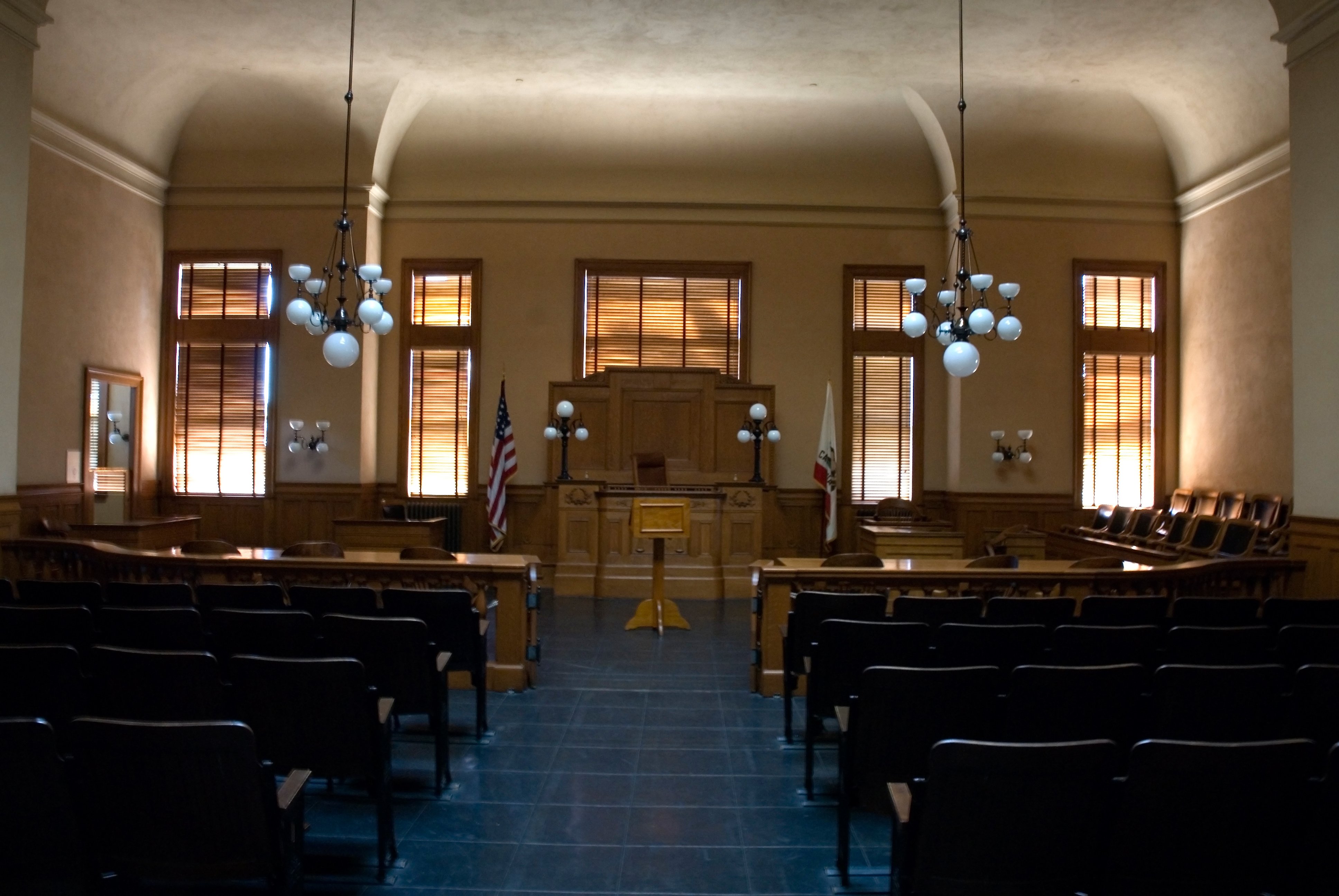Visibility in the courtroom is vital for all participants and spectators. Low courtroom lighting can cause visibility problems; overly bright lighting (or the wrong types of lights) can cause glare. The ability to see the body language and facial expressions of courtroom participants, such as the witness, is crucial to gauge whether the person is being honest.
Justice in the Dark: Improving Courtroom Lighting
Though the courtroom may be reasonably lit from a spectator standpoint, task lighting for counsel tables and the judge’s bench can be too low for effective reading. All these elements must be considered when deciding courtroom lighting levels and fixtures.
Lighting systems for contemporary courtrooms must address two different but equally important objectives. They should first respond to the traditional requirements of providing adequate ambient light levels for normal courtroom proceedings and highlighting courtroom seals and flags. As a second and more recently required function, they should also be adjustable to provide lower-intensity light levels needed for electronic evidence displays, personal computers, and video recording devices.
Courtroom Lighting Changes
Changes to the light fixtures in an existing courtroom, modifications to the ceiling height, or changes in the type of surface finishes will all require an integrated series of engineering decisions relative to achieving required ambient light levels, light level adjustment, and color balance. Decisions to reuse upgraded existing light fixtures, add new light fixtures, relocate fixtures, change fixture lamp types, or add dimmers are all engineering variables that should be balanced to support the functional requirements of the courtroom.
We have found that a principal limiting factor affecting the improvement of lighting to meet the two previously noted objectives in an existing courtroom is historic preservation. For courtroom improvement projects in which older historic courtrooms are being renovated, the selection and placement of fixtures can be challenging to reconcile with the multiple engineering variables.
When new courtroom lighting solutions are necessary, there may be  opportunities to reuse or restore period light fixtures that reflect the age and character of the courthouse. Where period fixtures with exposed lamps are to be retained, they should remain incandescent, although at a reduced wattage if the fixtures are no longer the primary light source in the courtroom.
opportunities to reuse or restore period light fixtures that reflect the age and character of the courthouse. Where period fixtures with exposed lamps are to be retained, they should remain incandescent, although at a reduced wattage if the fixtures are no longer the primary light source in the courtroom.
Where fixtures with globes and frosted panels are to be adapted for reuse, the older incandescent lamps should be retrofitted with fluorescent lamps. If new or additional recessed can lights are required, they should be positioned where they can unobtrusively blend with the architectural forms of the ceiling.
As shown in the accompanying photograph, this latter approach of retrofitting frosted globes combined with the addition of unobtrusive can lights was effectively applied in this historic Virginia courtroom in one of the oldest currently active courthouses in America.
Our next post will address Audio/Video and Data improvements in courtrooms.
__________________________________________________________






.jpg)
.jpg)
.jpg)
.jpg)
.jpg)
.jpg)


-1.jpg)
.jpg)
.jpg)
.jpg)
.jpg)
.jpg)
.jpg)
.jpg)

